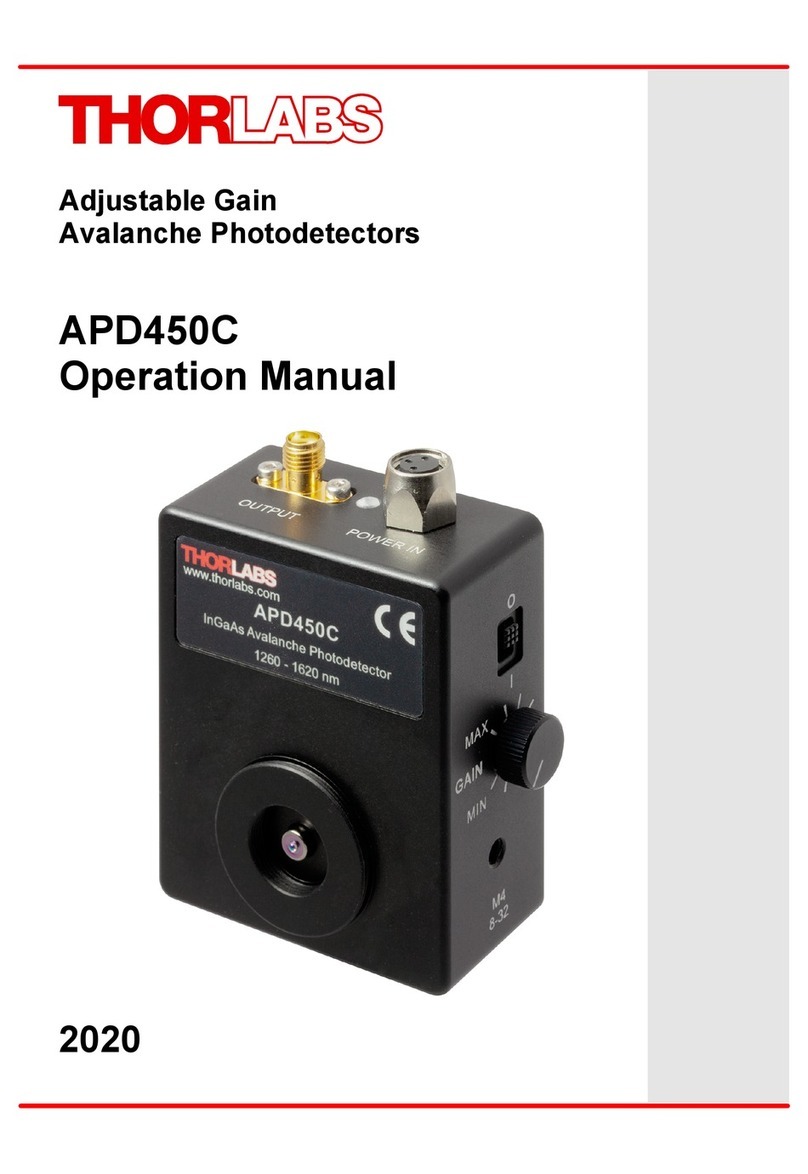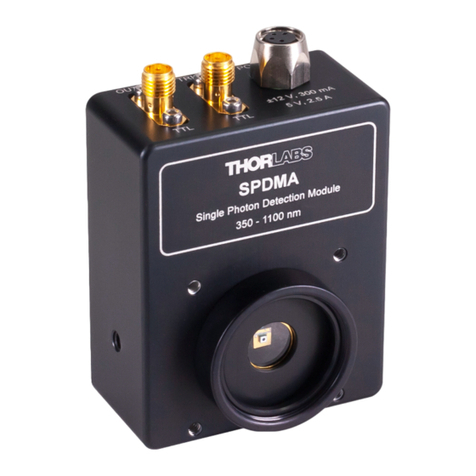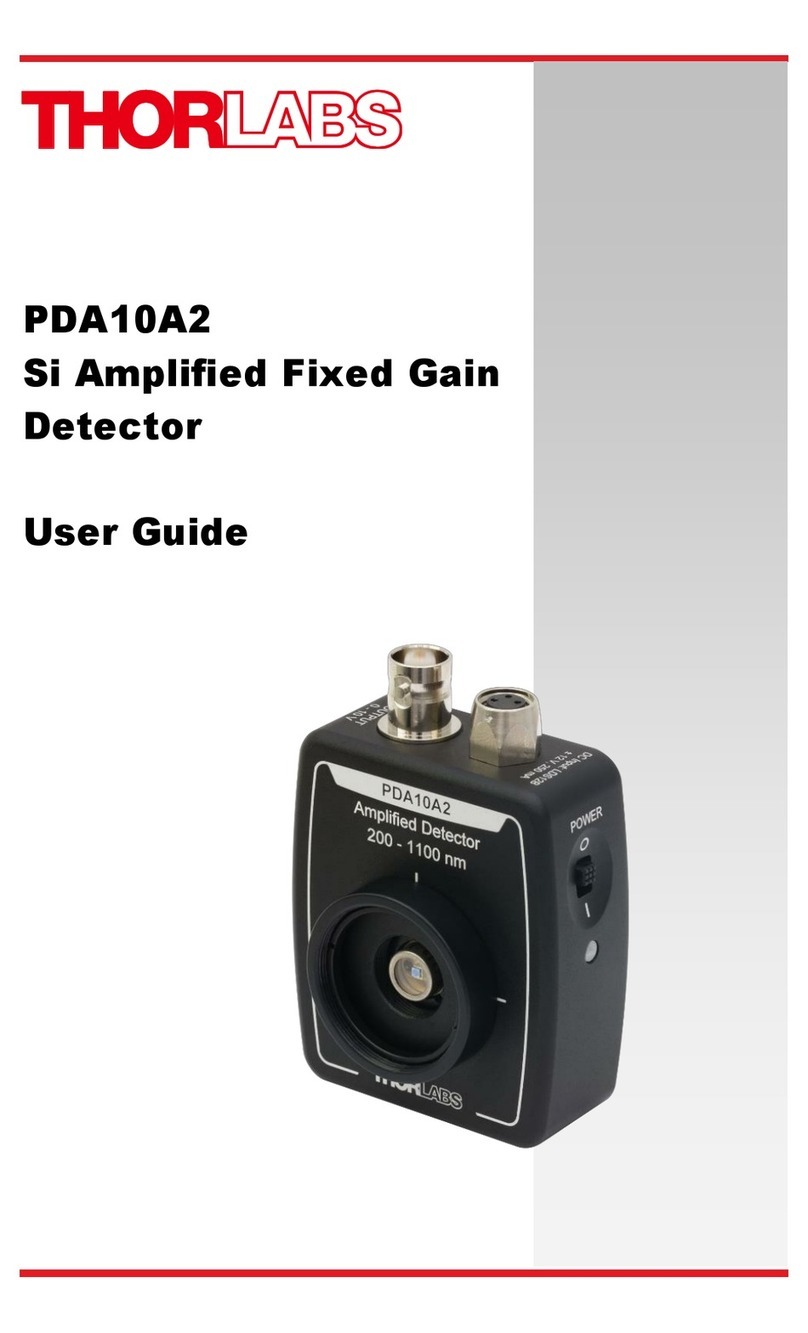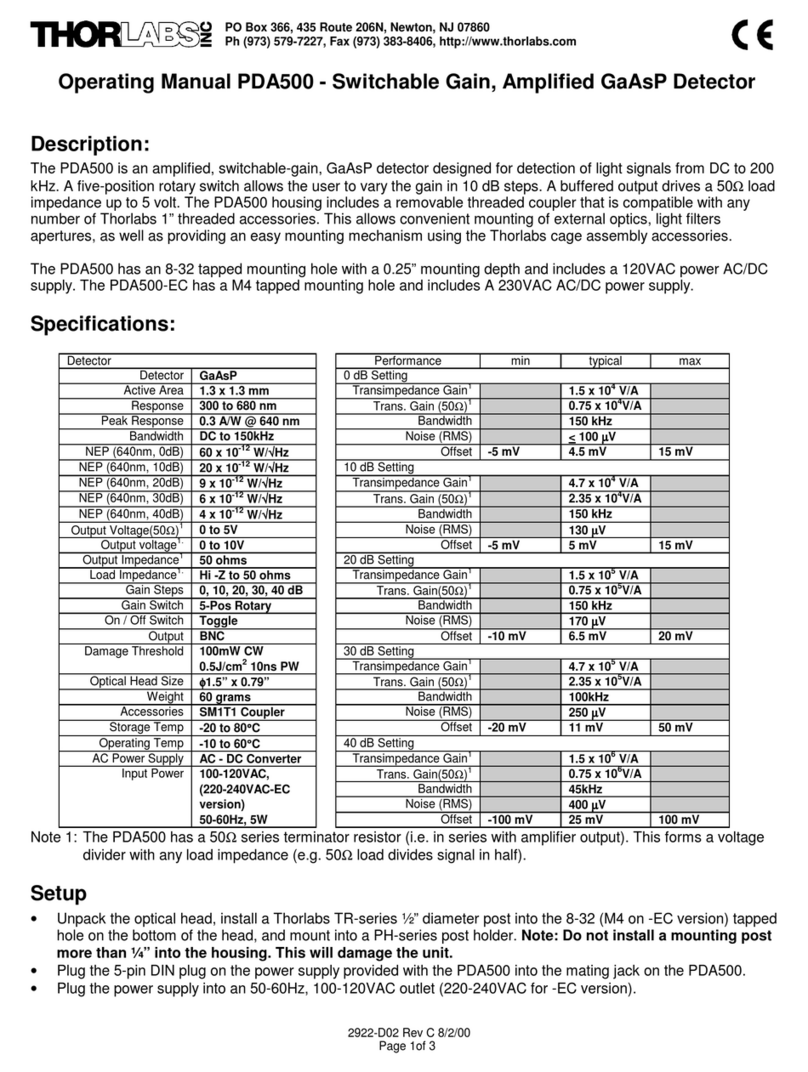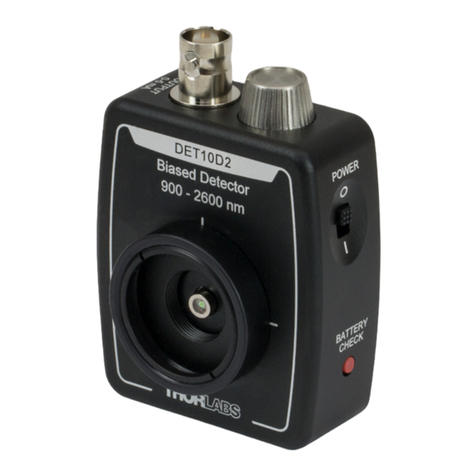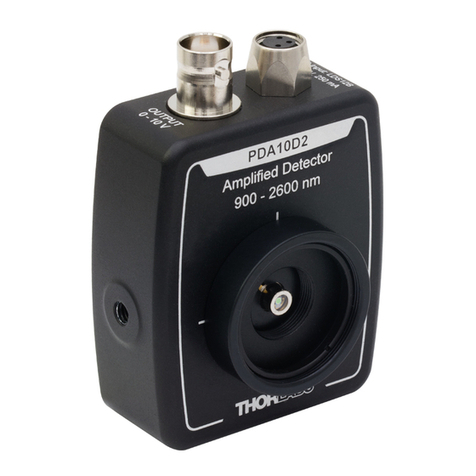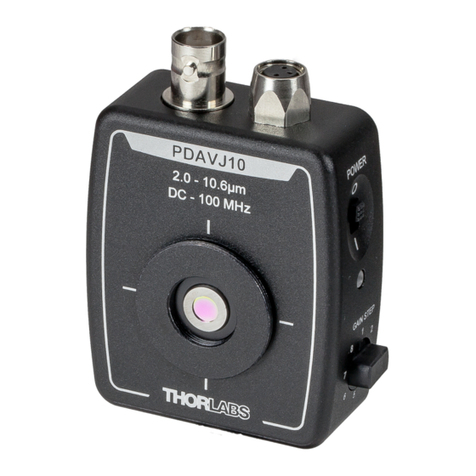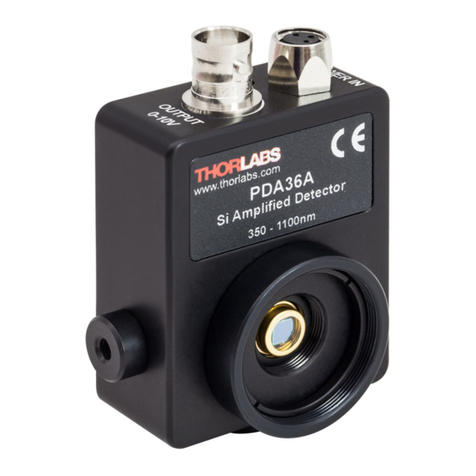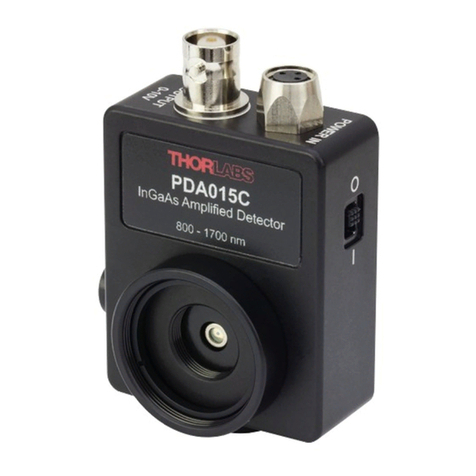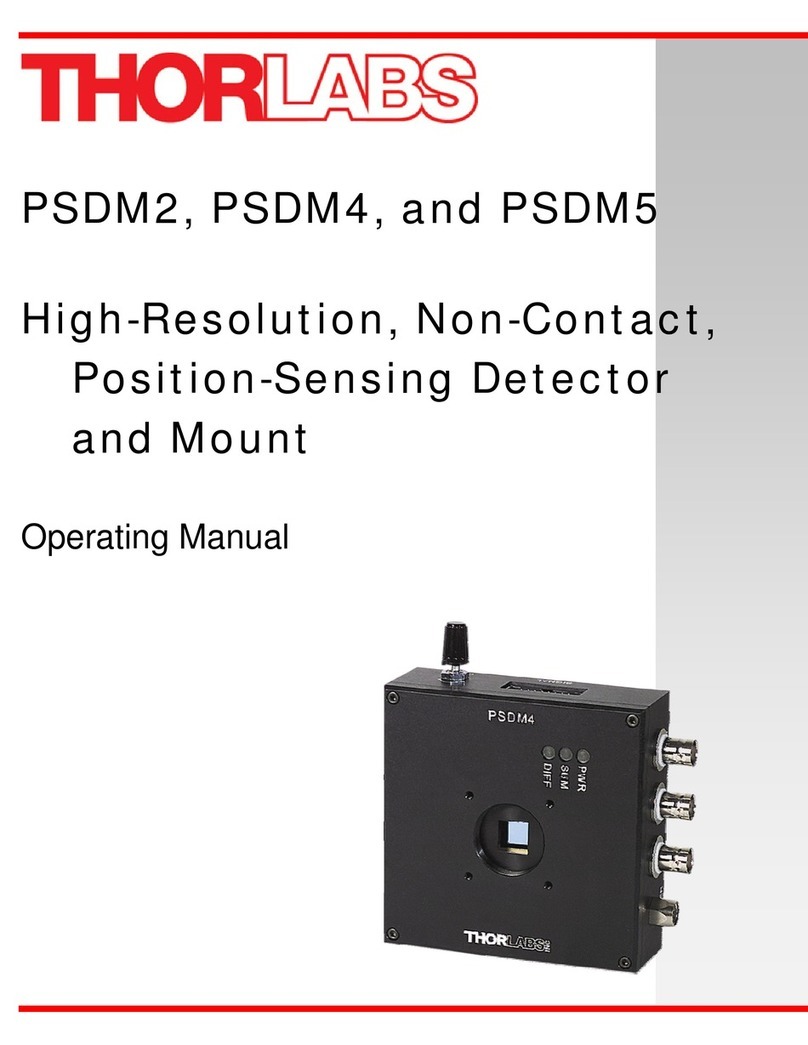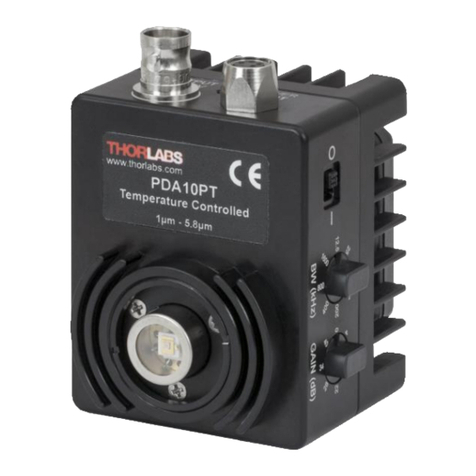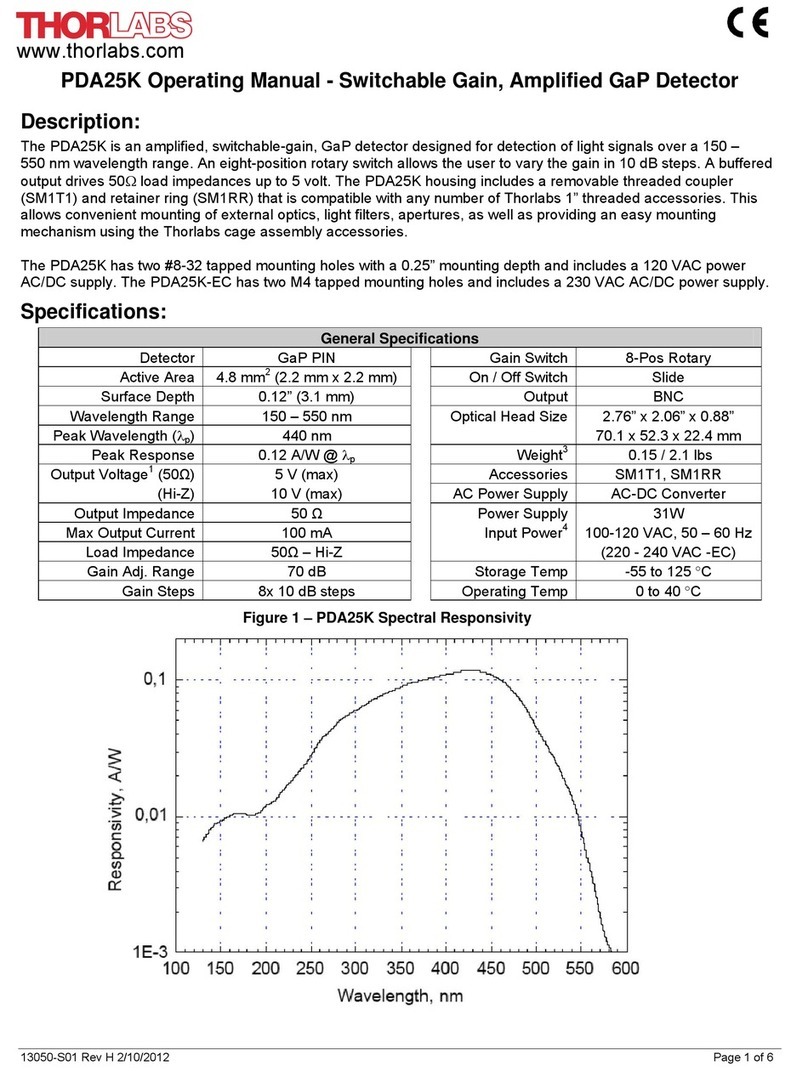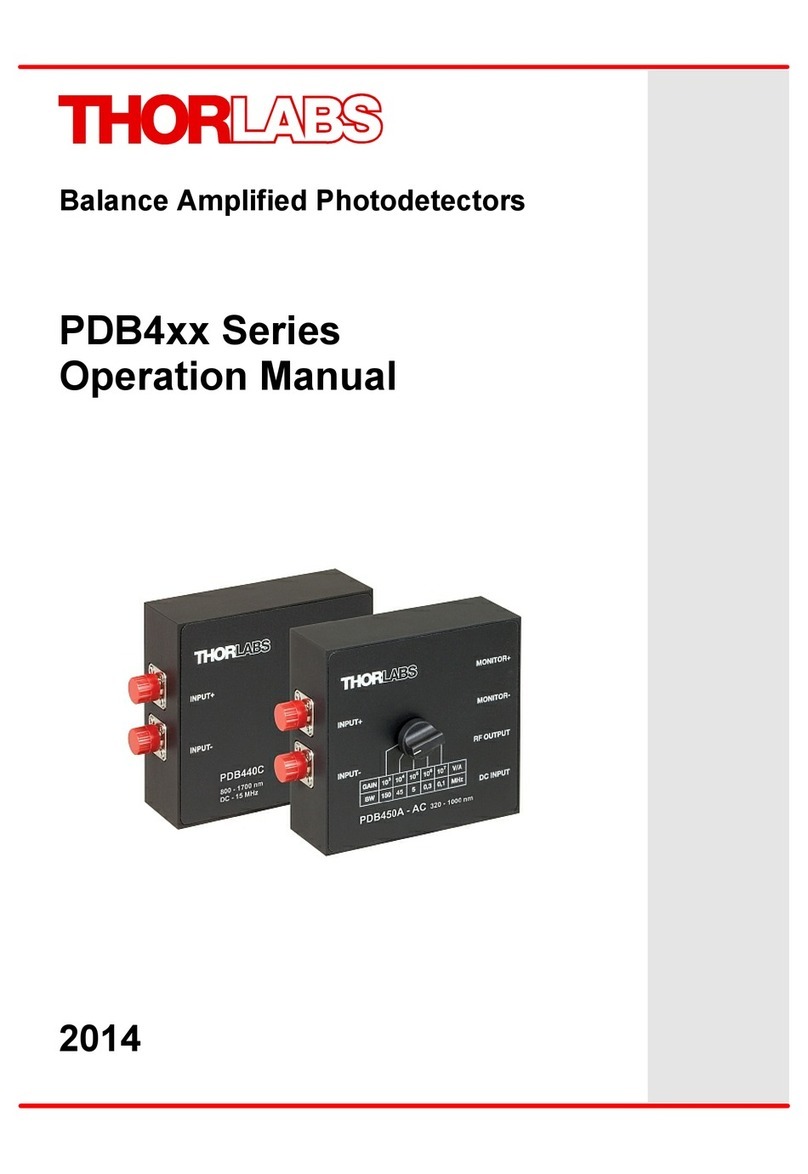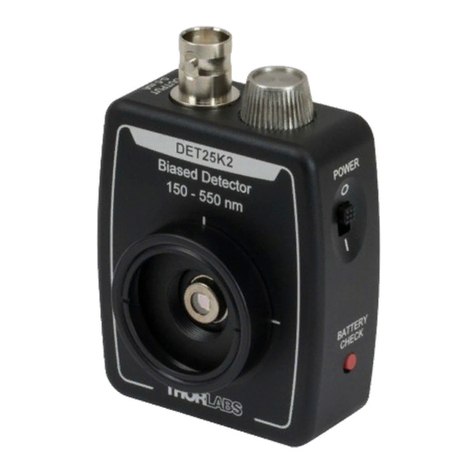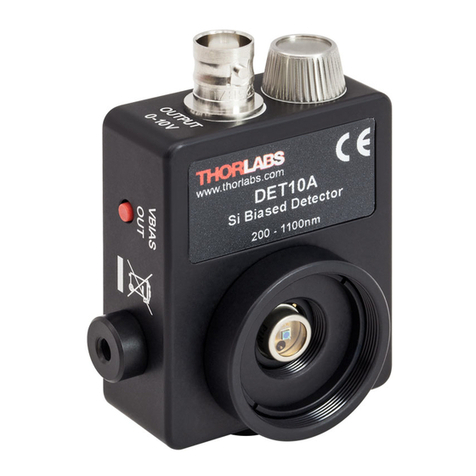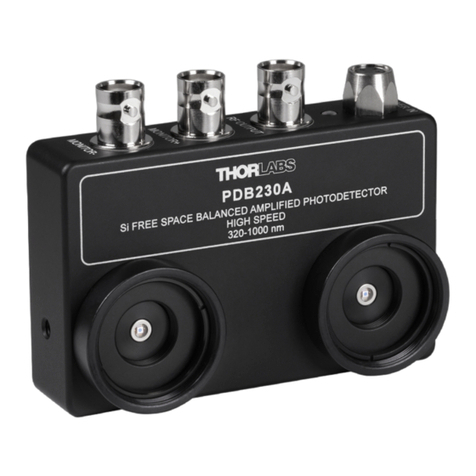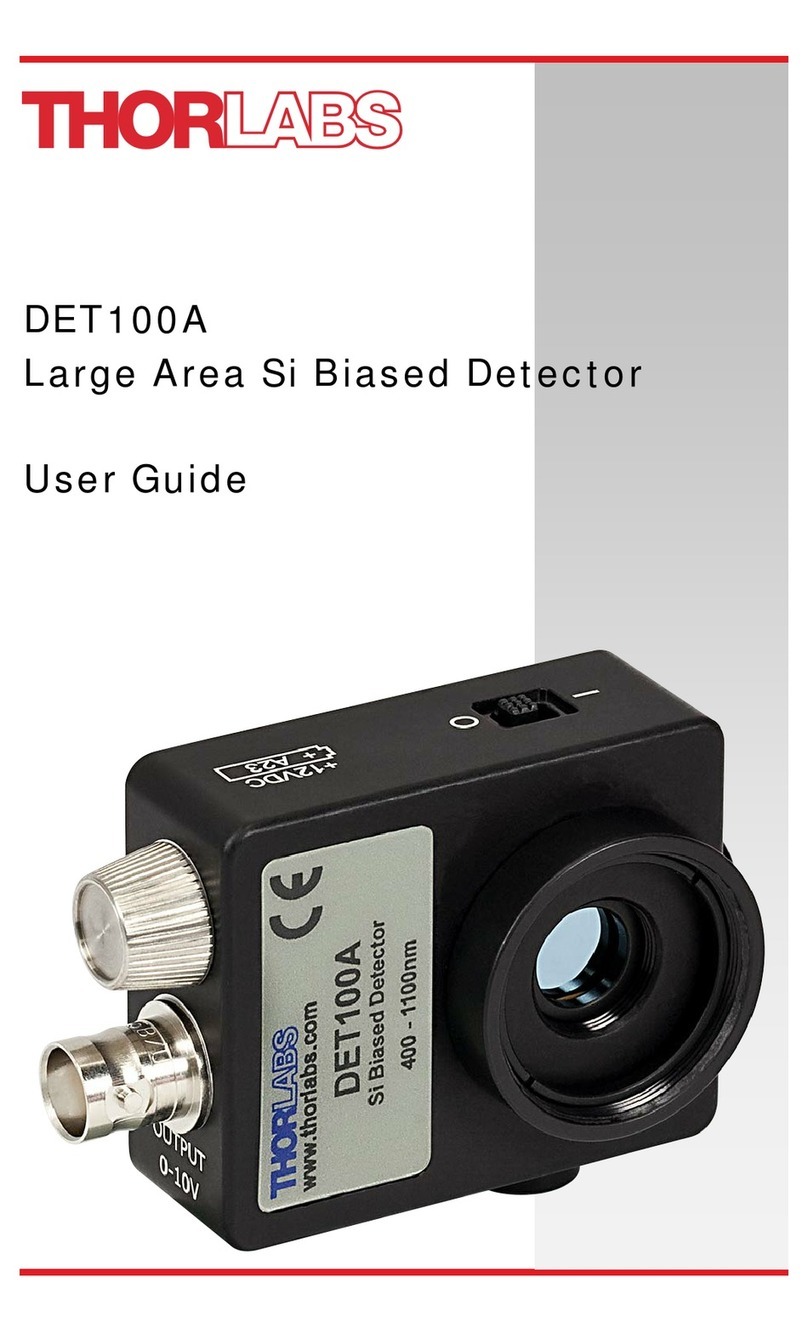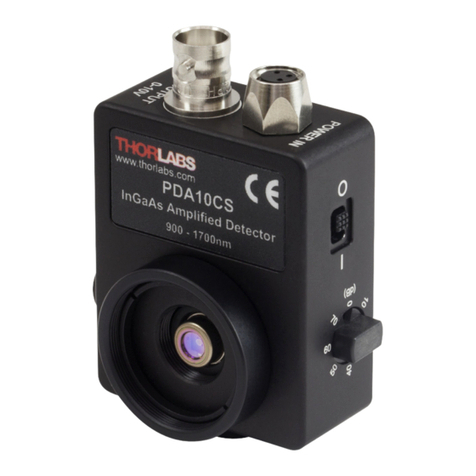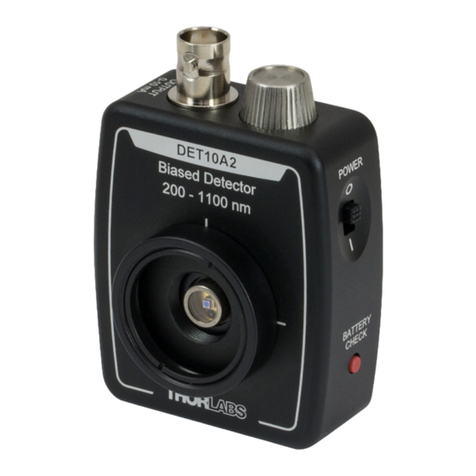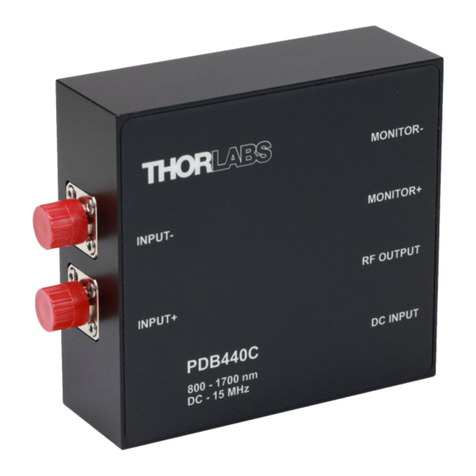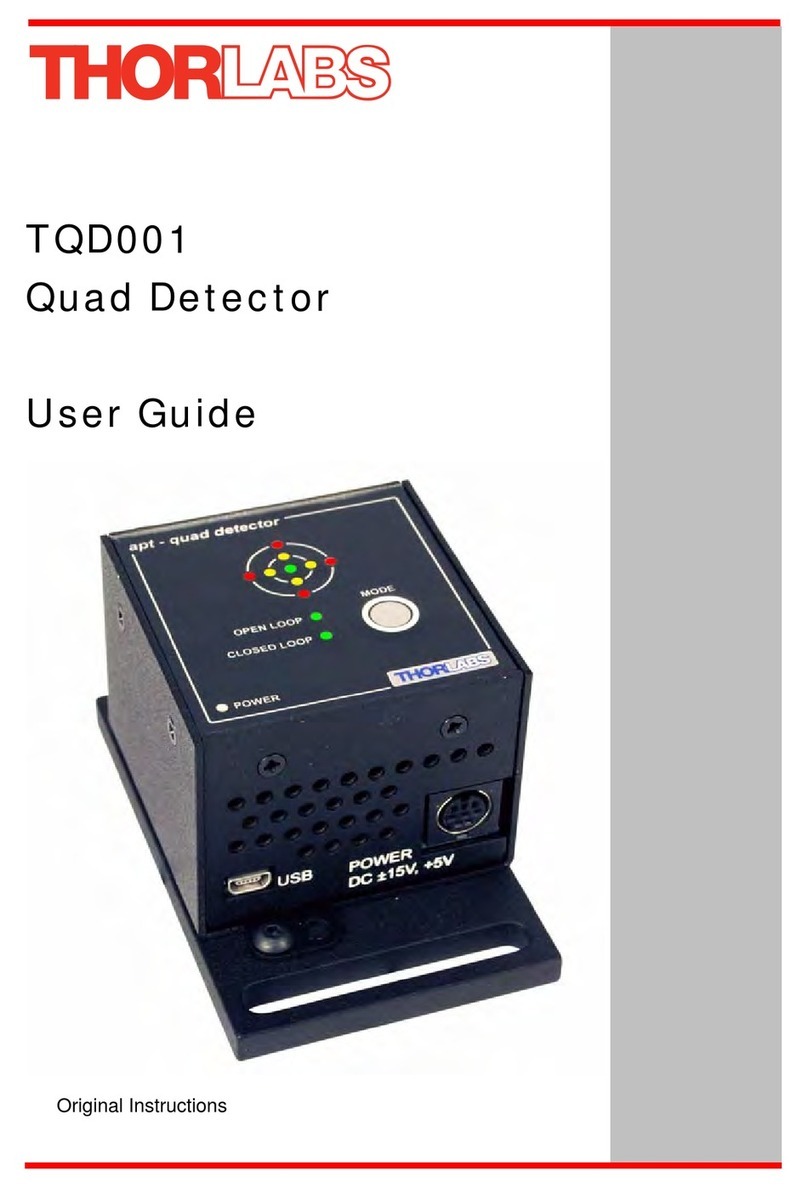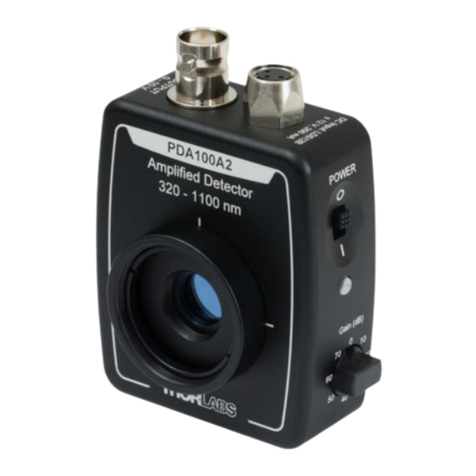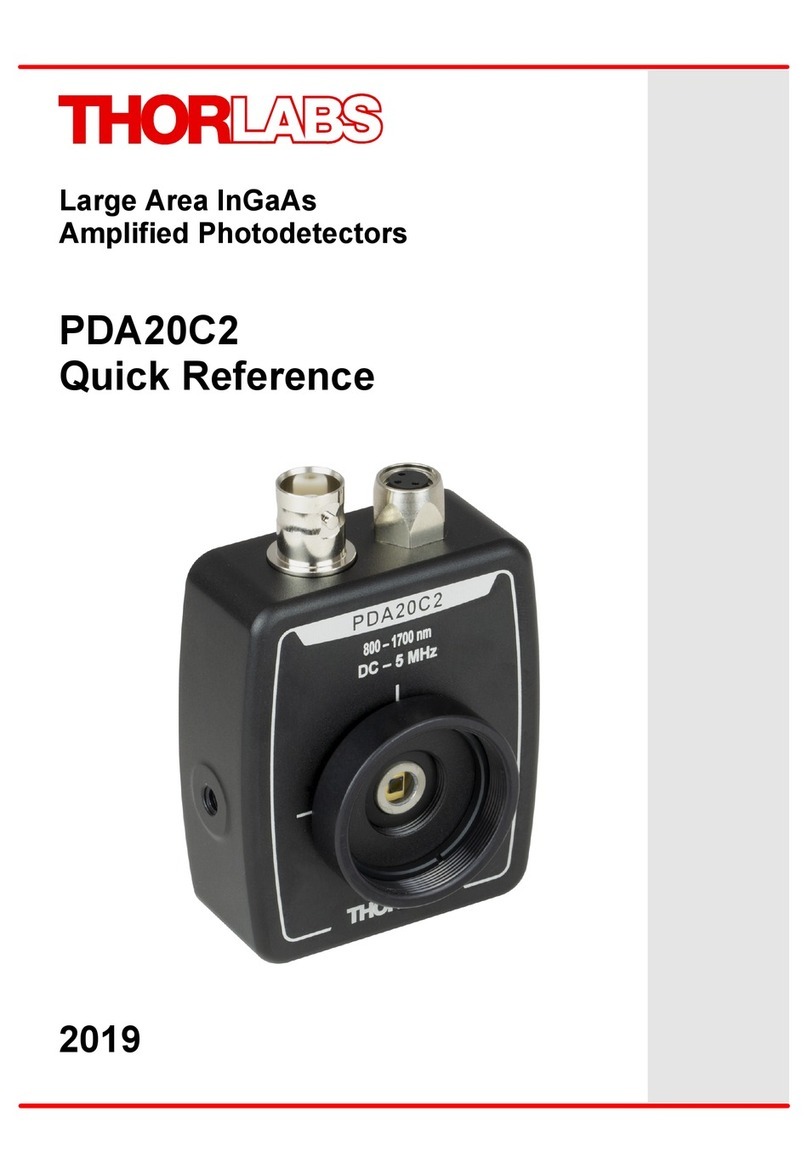
4
43
35
5
R
Ro
ou
ut
te
e
2
20
06
6
N
Ne
ew
wt
to
on
n,
,
N
NJ
J
0
07
78
86
60
0
P
Ph
ho
on
ne
e:
:
9
97
73
3-
-5
57
79
9-
-7
72
22
27
7
W
We
eb
b
S
Si
it
te
e:
:
h
ht
tt
tp
p:
:/
//
/w
ww
ww
w.
.t
th
ho
or
rl
la
ab
bs
s.
.c
co
om
m
F
Fa
ax
x:
:
9
97
73
3-
-3
30
00
0-
-3
36
60
00
0
2812-S02 Rev H 4/1/09
OPERATIONAL INSTRUCTIONS FOR THE PHOTODETECTORS
SIR5-FC, SV2-FC, AND SUV7-FC
•Inject the radiation to be analyzed into a 50 μm fiber. Keep the energy and power of the
radiation below the damage threshold of the fiber tip/volume.
•Attenuate the peak power of the optical pulse exiting the fiber to less than 20 mW. NOTE: If
the photodetector input is greater than 20 mW, the detector may be damaged, and the
warranty will not apply.
•Connect the photodetector to an oscilloscope using a high-bandwidth SMA adapter. Using
cables or low-bandwidth adapters will significantly degrade the quality of the measurement.
•Slowly insert the FC fiber connector into the photodetector fiber receptacle while watching the
electrical signal on the oscilloscope. The maximum value of the signal must be lower than 1V
into 50 Ω. Attenuate at the fiber input until the fiber connector can be completely inserted into
the receptacle without exceeding 1V.
•Upon completion of measurements, disconnect the fiber from the photodetector, or block the
fiber input to prevent unnecessary drain on the batteries.
•Always use protective plastic caps for the fiber connectors and photodetector receptacles.
Note about Battery Lifetime
When using battery operated photodetector packages it is important to realize the limitations on the battery life.
Photo detectors are current output devices, meaning that the output current is directly proportional to the light
hitting incident on the detector. Most users will convert this to a voltage by applying a load terminating resistor.
The resistance value is essentially the circuit gain. For very high speed detectors, such as the SIR5, SV2, and
SUV7, it is very important to use a 50Ωterminating resistor to match the impedance of standard coax cables to
reduce cable reflections and improve overall signal performance and integrity. Most high bandwidth scopes
include this termination.
Since the detector is a current device, this directly correlates to the battery usage lifetime. Most battery
manufacturers provide a battery capacity in terms of mA hr. The battery used with these detectors is rated for
190mA hrs. this means that it will reliably operate for 190hr at a current draw of 1mA. Below is a quick example
of how to determine batter lifetime:
Let’s assume a 1550nm light source with an average 1mW power is applied to an SIR5. The responsivity of a
biased photodetector at this wavelength is 1.0 A/W as shown in the response curve above. From this the photo
current can be calculated as 1.0 A/W * 1 mW, or 1.0 mA. If the battery used to power the biased photodetector
has a specified capacity of 190 mAhrs, as the SV2 does, then the battery will last 190 mA hrs / 1.0 mA, which
equals 190 hrs (8 days) of continuous use. By reducing the average incident power of the light to 10 uW the
